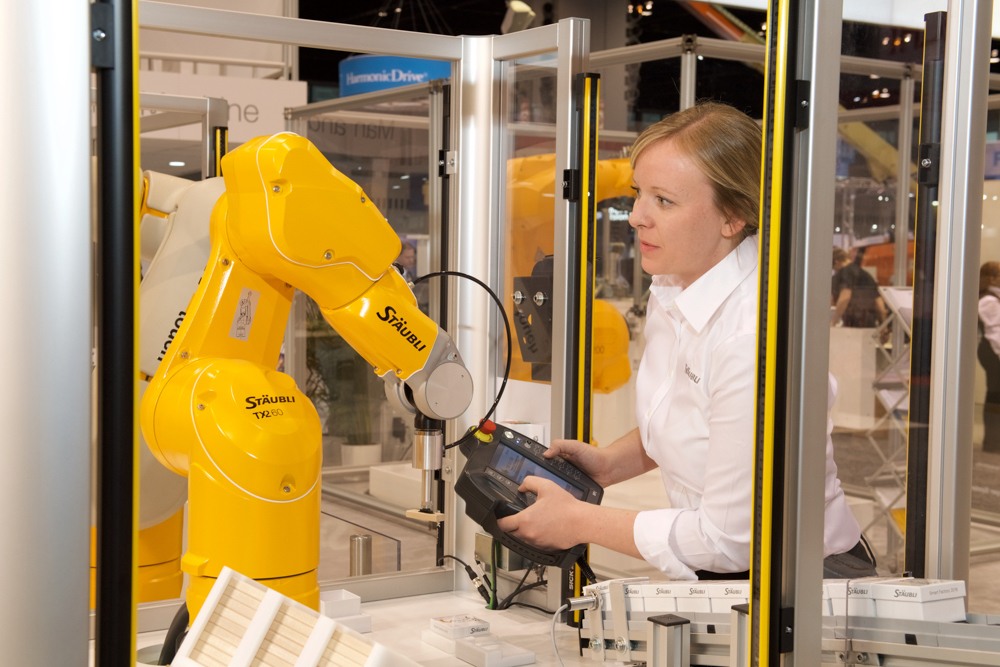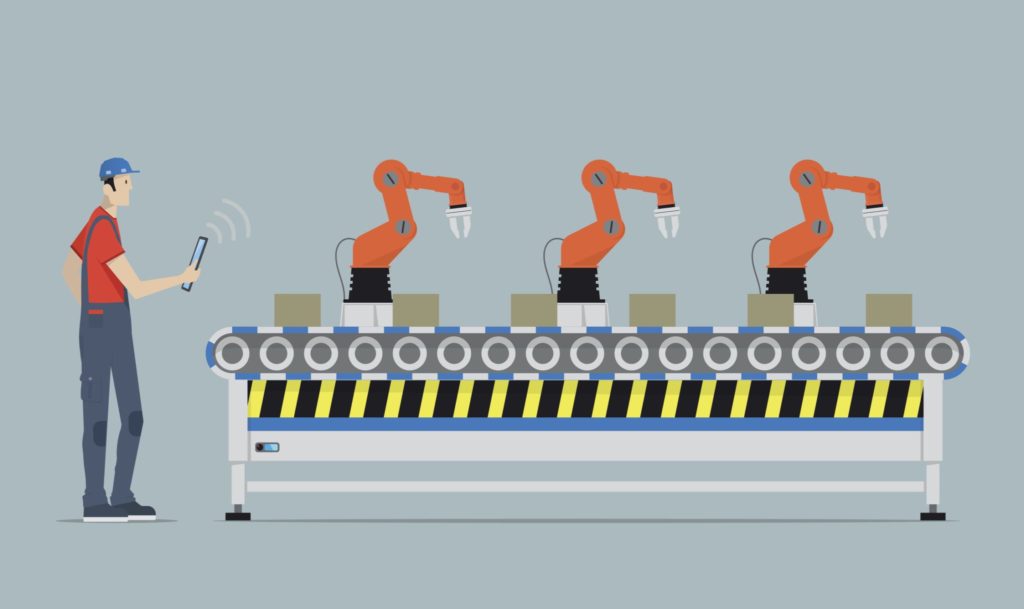There’s a new wave of robots on the horizon. They’re smarter, safer, and cheaper than earlier models. And, they’re going to have a major impact on manufacturing for years to come.
That may be why manufacturing experts consider robotics to be the greatest potential disruptor over the next five years, according to a new study from the University of Kentucky’s Global Supply Chain Institute.
“Robotics have been around for more than 50 years, but they have become dramatically more dynamic in the last five,” says Paul Dittmann, executive director of the Global Supply Chain Institute and author of the paper. “It used to be that robots were in a cage and were dangerous. They had very limited applications and weren’t programmable. Now we have robots that work alongside a human. They’re so easy to program that people can literally move their arm and program the robot, as opposed to complex code.”
Meet Your New Colleague
Stäubli is one of the companies producing these collaborative robots. The Swiss-based company unveiled its new TX2 line at the Automate trade show this April.
This focus on safety and collaboration is part of a second phase for robotics, says Paul Deady, automotive segment manager at Stäubli. In the first phase, robots took over jobs that were too “dangerous, dirty, or mundane for people to do. We put robots in those application spaces. We took people out,” he says. The second phase is focused on “robots that are purpose-built—designed and engineered to be safe to work alongside people.”

The TX2 models use compact laser scanners to detect the presence of humans. When a technician approaches, the robot reduces its speed. If the technician gets too close, the robot stops until he or she has moved to a safe distance. These models also have a “sensory skin” that immediately stops operations when touched.
One downside of these collaborative robots is that production and speed are sacrificed with frequent slowing and stopping. Dittmann believes that this will change as technology develops.
While safety has been increasing, prices have been going down. The cost of purchasing and operating a robotic spot welder, for example, went from $182,000 in 2005 to $133,000 in 2014, and will drop to $103,000 by 2025, according to a report by the Boston Consulting Group. At the same time, robotics performance will improve by around 5 percent each year.
Lowered costs, lessened barriers to entry, and improved performance of robotics will be a catalyst for increased adoption. Boston Consulting Group predicts that the share of tasks that are performed by robots will rise from a global average of around 10 percent across all manufacturing industries today to around 25 percent by 2025.
At Stäubli, Deady has seen robotics expanding from the traditional automotive space. “We’re seeing a lot of creativity and capital flow into the robotics space,” he says. “It’s a growing market.”
Preparing for the Tech Tsunami
There’s more new technology out there than ever before, Dittmann says. “It’s almost like a tsunami coming at people. Those who ignore it could be in serious trouble,” he adds. But he’s quick to point out that staying current doesn’t mean chasing every new technology. There needs to be analysis and solid ROI.
Manufacturers interested in robotics should follow a disciplined and methodical approach. When Deady works with Stäubli customers that are new to robotics at, he recommends the following actions:
Document Your Existing Processes
“If a manufacturer hasn’t embraced robotics before, the first thing I encourage them to do is to document their existing processes,” he says. Document what you do and how you do it, as well as any process variations.
Manufacturers should also take the time to measure process cycle times, error rates, and other key metrics that can establish a baseline. “By documenting your existing processes, you can understand the sequence of operations,” he adds.
Look for the Easy Wins
“Then, you start to look for what we call low-hanging fruit,” says Deady. He recommends manufacturers look for processes that are repeatable, consistent, and don’t have a lot of variability. These are the easiest to automate and bring benefits like reducing scrap rates and waste and improving product quality. Dirty, dangerous jobs are also great opportunities for automation.
Create an Implementation Plan
“Get your people involved early on, and don’t skimp on training,” Deady recommends. “Have them present during the installation and commissioning phases. There’s opportunity for what I like to call informal skills transfer. You’re hanging out, watching the equipment go in, and able to ask questions. You can pick up a lot that way.”
Manufacturers also need to plan for how long installation and training will interrupt manufacturing. Once the new equipment is installed and running, companies should measure the actual performance and document the new processes.
Back Up the System
A mistake Deady often sees is manufacturers not backing up their new robotics programs. “If something catastrophic happens, they are in a world of hurt,” he says. “Back up the system.”
Advice for Managing Robotics Programs
When it comes to managing robotics programs, Deady, who worked as a project manager before joining Stäubli, recommends PMs view robotics as “just another project.”
“Break it down into quantifiable systems,” he adds. “Just like any other project, break down the work breakdown structure. Don’t be intimidated by robotics and automations. Take a methodical, disciplined approach, and you’ll have success.”
Dittmann advises manufacturers to not lose sight of the methodologies and best practices that have been successful in the past. “Manufacturing 4.0 still needs to have Lean at its core,” he says. “Sometimes you get the bright shiny toy, take focus off what you got there, and get in trouble. Lean manufacturing is at the core of everything. It can’t be ignored or deemphasized.”








